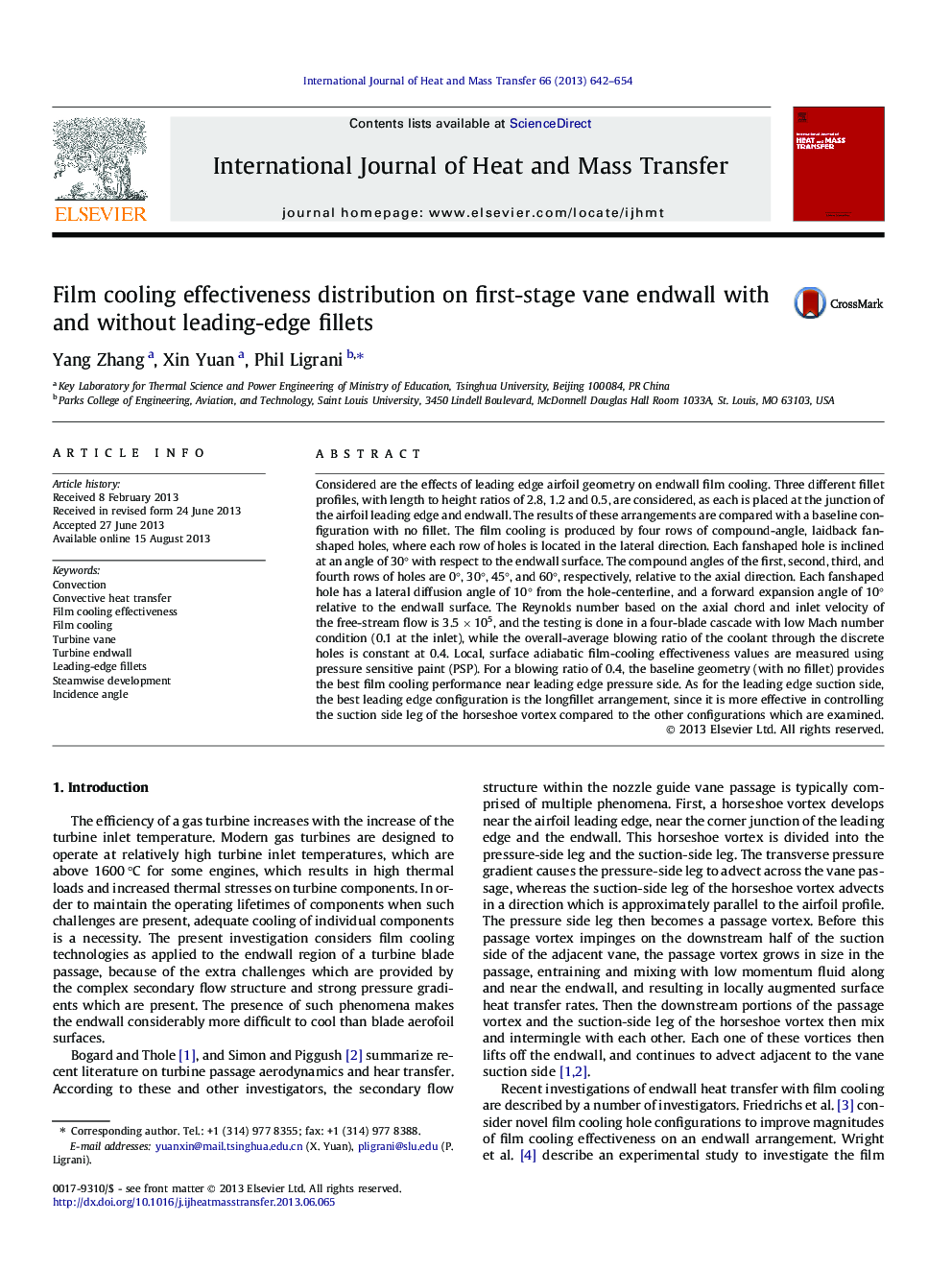| کد مقاله | کد نشریه | سال انتشار | مقاله انگلیسی | نسخه تمام متن |
|---|---|---|---|---|
| 7058154 | 1458076 | 2013 | 13 صفحه PDF | دانلود رایگان |
عنوان انگلیسی مقاله ISI
Film cooling effectiveness distribution on first-stage vane endwall with and without leading-edge fillets
ترجمه فارسی عنوان
توزیع اثربخشی خنک کننده فیلم در مرحله پایانی گلوله با و بدون فیلیپین پیشانی
دانلود مقاله + سفارش ترجمه
دانلود مقاله ISI انگلیسی
رایگان برای ایرانیان
کلمات کلیدی
همرفت، انتقال گرما همراه است اثرات خنک سازی فیلم، خنک کننده فیلم، توربین توربین، توربین انتوال، فیله سرب توسعه بخار آب، زاویه بروز،
موضوعات مرتبط
مهندسی و علوم پایه
مهندسی شیمی
جریان سیال و فرایندهای انتقال
چکیده انگلیسی
Considered are the effects of leading edge airfoil geometry on endwall film cooling. Three different fillet profiles, with length to height ratios of 2.8, 1.2 and 0.5, are considered, as each is placed at the junction of the airfoil leading edge and endwall. The results of these arrangements are compared with a baseline configuration with no fillet. The film cooling is produced by four rows of compound-angle, laidback fan-shaped holes, where each row of holes is located in the lateral direction. Each fanshaped hole is inclined at an angle of 30° with respect to the endwall surface. The compound angles of the first, second, third, and fourth rows of holes are 0°, 30°, 45°, and 60°, respectively, relative to the axial direction. Each fanshaped hole has a lateral diffusion angle of 10° from the hole-centerline, and a forward expansion angle of 10° relative to the endwall surface. The Reynolds number based on the axial chord and inlet velocity of the free-stream flow is 3.5 Ã 105, and the testing is done in a four-blade cascade with low Mach number condition (0.1 at the inlet), while the overall-average blowing ratio of the coolant through the discrete holes is constant at 0.4. Local, surface adiabatic film-cooling effectiveness values are measured using pressure sensitive paint (PSP). For a blowing ratio of 0.4, the baseline geometry (with no fillet) provides the best film cooling performance near leading edge pressure side. As for the leading edge suction side, the best leading edge configuration is the longfillet arrangement, since it is more effective in controlling the suction side leg of the horseshoe vortex compared to the other configurations which are examined.
ناشر
Database: Elsevier - ScienceDirect (ساینس دایرکت)
Journal: International Journal of Heat and Mass Transfer - Volume 66, November 2013, Pages 642-654
Journal: International Journal of Heat and Mass Transfer - Volume 66, November 2013, Pages 642-654
نویسندگان
Yang Zhang, Xin Yuan, Phil Ligrani,
